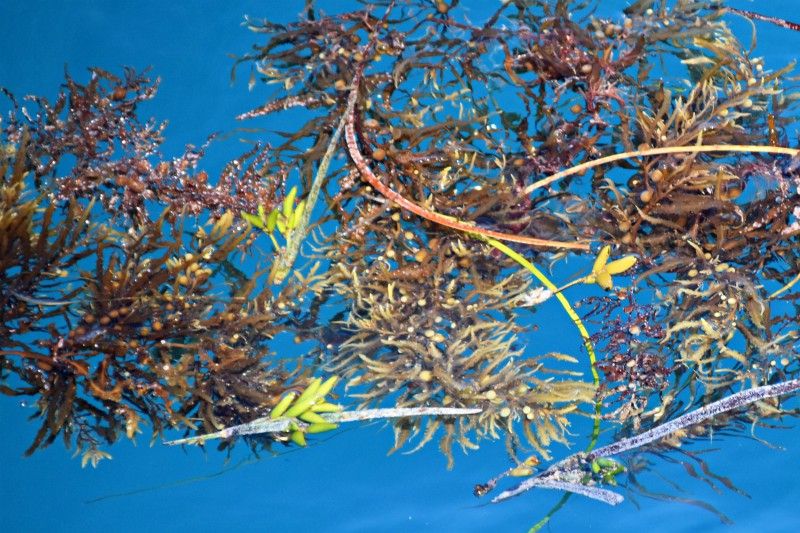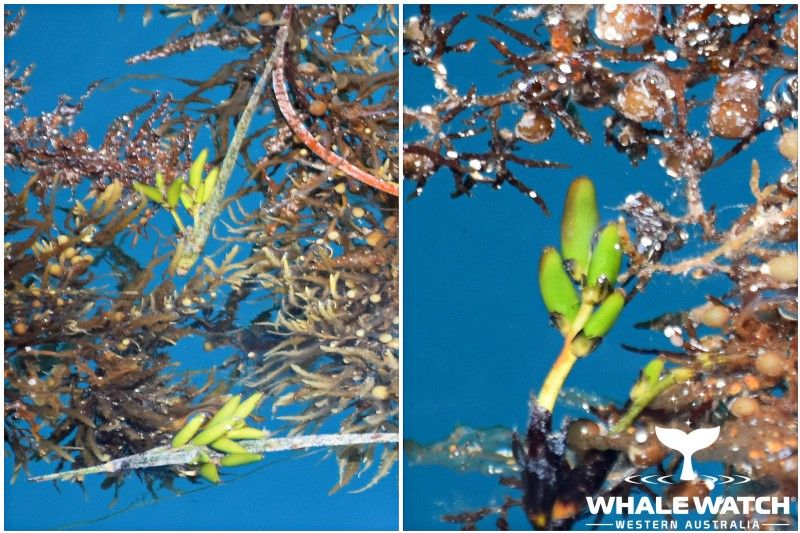
JoshMarine Scientist Read More
Amazing Seagreass – There are many important and often overlooked plants and animals that occur on the coast of Western Australia. A great example of this is when distracted by a 45 tonne mother humpback whale with her calf showcasing pectoral slaps, breaches and loud exhales at a staggering 300+ km/hr. You might miss the inconspicuous seagrass leaves or seagrass fruits floating on the water surface. Fair enough, however, seagrasses are vital in the marine ecosystem.
Overall, there are approximately 72 amazing seagrass species that have been able to colonise shallow coastal marine environments around the world. Western Australia is rich in diversity as 27 species cover 20,000 square kilometres of this coastline. Seagrasses are marine flowering plants that have unique adaptations that allow them to survive as well as influence the physical, chemical and biological components of the coastal marine environment. Seagrasses come in only a few shapes and sizes. They have roots like terrestrial plants that protrude vertically out of a horizontally growing rhizome. Shoots occur between nodes on the rhizome which holds the leaves vertically in the water column allowing them to photosynthesise.
Seagrasses provide an array of important ecosystem services and functions. The thick canopies created by the leaves in seagrass meadows reduce the flow of water moving over them, dissipating the strength of the swell reaching our coastlines. This baffling of the water also helps to reduce the amount of suspended particles in the water column, cleaning the water and enabling more light to reach the ocean floor. The leaves of seagrasses are naturally shed or can detach from the plant by storms. Tides, currents and wind can transport these leaves far distances along the water surface. The leaves may eventually fall to the seafloor where they can be eaten by other animals or they can be transported to the coastline where it forms beach wrack. Beach wrack might be smelly during hot days but it is important in reducing coastal erosion as it forms a natural barrier that reduces the impact caused by waves. Sea birds are also attracted to the beach wrack as it teems with animals decomposing the organic material on the beach.
The roots and rhizomes help to bind and trap the sediment that has fallen out of suspension, elevating the profile of the seafloor over time. The three dimensional structure created by the leaves and shoots in seagrass meadows provides the perfect protective nursery ground for many commercially and recreationally important finfish and shellfish during vulnerable stages of their life. Seagrass meadows usually boarder other important marine habitats such as coral reefs or mangrove forests, therefore can provide a top up of important species found in these habitats. Just like terrestrial plants, they absorb carbon dioxide and released oxygen into the water. However, they are much more effective at trapping and storing carbon dioxide in the sediment around them. Especially in large seagrass meadows that are long lived and have a dense below-ground mat of roots and rhizomes that help store carbon and prevent sediments from being eroded away. These meadows have been shown to be approximately 40 times faster at storing carbon dioxide than tropical forests, making them an important ecosystem to maintain to ensure the health of our ocean and its inhabitants for generations to come.
Unfortunately, seagrass coverage has decline dramatically due to their close proximity to populated coastal areas. Nutrient enrichment, boating activities, marine and coastal construction are some of the disturbances causing the decline in seagrass meadows. There has been a lot of work around the world and more recently in Western Australia to try and rehabilitate or restore damaged areas. However, they have mostly failed and proved very costly. One of the ways that seagrass increase genetic diversity and naturally expand their distribution is through seed dispersal. Seeds are found within 3 – 4 cm green fruit that are released from the seagrass when developed. The fruit is positively buoyant which allows them to be carried long distances by currents, wind or animals where the seeds are expelled from the fruit. The seeds are negatively buoyant, falling to the sea floor where they begin to grow and start the wonderful process of seed to amazing seagrass.
On our tours, seagrass fruits and leaves are commonly observed drifting on the water surface during this time of year. So the next time you join us I hope you can have a greater appreciation for them than just small green nodules floating on the surface, this is in fact amazing seagrass !







